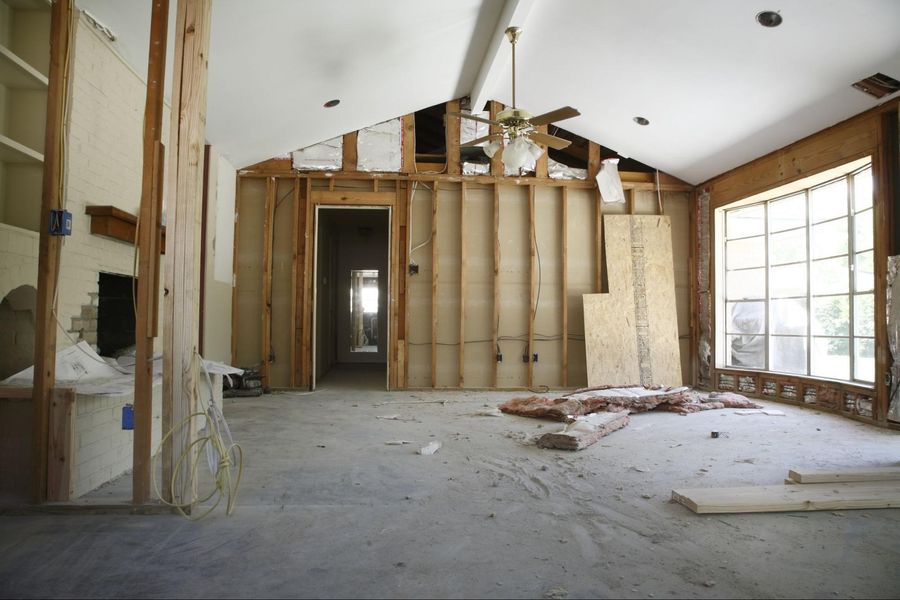Last Updated on October 24, 2023 by CREW Editorial
Water bills don’t get the respect they deserve. They’re just records of the water used at a property, right? But with the average price of water increasing 3.8% across Ontario – a greater increase than property taxes – water bills should command more attention, especially when you’re investing in major renovations.
Whether your reno project is designed to increase space or improve amenities, there’s a good chance that the water flowing through your property will be affected. Choosing the right products for your home and being vigilant against common causes of water loss can help you maximize the value you get from your next renovation project.
Watch the throne
Investing in water-efficient toilets reduces the average amount of water used after each flush, but according to the US Environmental Protection Agency, one out of every four toilets leaks. A medium toilet leak wastes about 1,000 liters of water a day, which can cost up to $1,000 a year. That’s money that could be better spent on other aspects of your renovations, like a new countertop or bathroom vanity.
While toilets can leak for a number of reasons, the main culprit tends to be the flapper valve. An easy test to see if this is the cause of a leak is to put a few drops of food colouring in the toilet tank and wait 30 minutes. If the coloured water in the toilet tank has leaked into the toilet bowl within that time, you’ve got yourself a leaky flapper valve. Flapper valves cost about $5 to $10 and take a few minutes to replace. It’s well worth the investment when you know about this type of problem. Of course, toilets aren’t the only plumbing fixture or water-using appliance that can leak.
Switchin’ the kitchen
If your kitchen renovation includes all new appliances, you should know that an ice- and water-dispensing fridge can also leak. Over time, if you don’t notice the water under the fridge, you could end up with serious water damage, so it’s a good idea to place a smart water leak detector near your fridge. As soon as water touches the sensor, you get an alert on your phone.
Water leak detectors can also be placed under your kitchen sink to protect your new base cabinetry or near a washing machine, water heater tank, or any water-using appliance or plumbing fixture. The best leak detectors on the market work in power outages and have extension cables that detect temperature, too. They’re an affordable way to protect your renovation investment.
Flood fighting
A basement renovation often involves buying new flooring and fancy home entertainment equipment, but what about a sump pump upgrade? Around 11% of basement floods happen because people don’t properly maintain their sump pump, which causes it to fail when it’s needed most. There are smart alarms that track the sump pump’s performance. These predictive sump pump sensors are enabled by a cellular connection and backup battery that keeps them working in a power outage. After spending $40,000 on a new basement, it makes sense to protect your investment with a smart sump pump sensor.
It’s quiet (a little too quiet …)
Another thing to consider when protecting your renovation from water costs is the silent leak. If a toilet leak is running to the tune of 10 liters a minute, you’re likely to hear it if you’re within earshot. But what if the flow rate of water is less than that? What if your toilet has a silent leak? Over time, all that wasted water leads to hundreds of dollars in wasted utility expenses.
Other sources for silent or intermittent leaks that can go undetected for months – or years – is your furnace humidifier or pinhole leaks in pipes behind drywall that continuously drip and gradually rot the wood in studs or cause a ceiling to collapse after being weakened. Depending on the city you live in, you may not receive a water bill every month and not know about problems for months since the increase in fees might not be extreme until it’s too late.
Thankfully there is defense against these types of leaks: a smart water flow sensor. Unlike a water leak detector, which only alerts you when it gets wet, a smart water flow sensor straps onto a water meter in any building to monitor water use in real time. It learns water usage patterns and sends you alerts when it spots something suspicious like a silent leak.
News outlets frequently cover stories about surprise water bills as a result of infrequent feedback about water usage. If water use is monitored in real-time, there will be no more surprise water bills. The best water flow sensors work with your existing water meter and detect problems like low temperatures to reduce the chance of pipes freezing, another common source of water damage.
As any home inspector will tell you, water can bankrupt you. A small investment made in the form of smart water flow and leak detectors and the occasional toilet leak test will go a long way in preserving the value of your property renovation.

George Tsitzouras is the CEO of Alert Labs, a startup that specializes in smart home sensors. For more information, visit alertlabs.com








